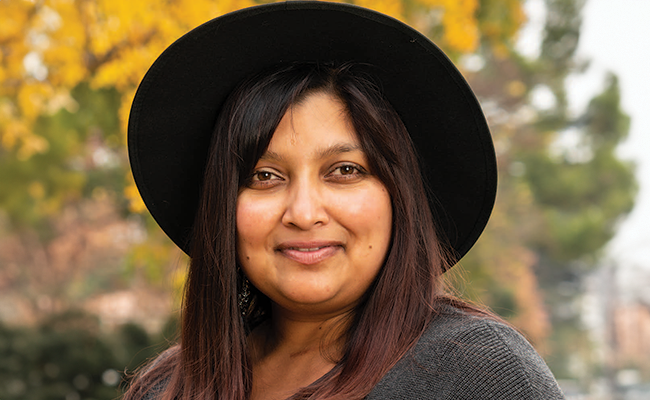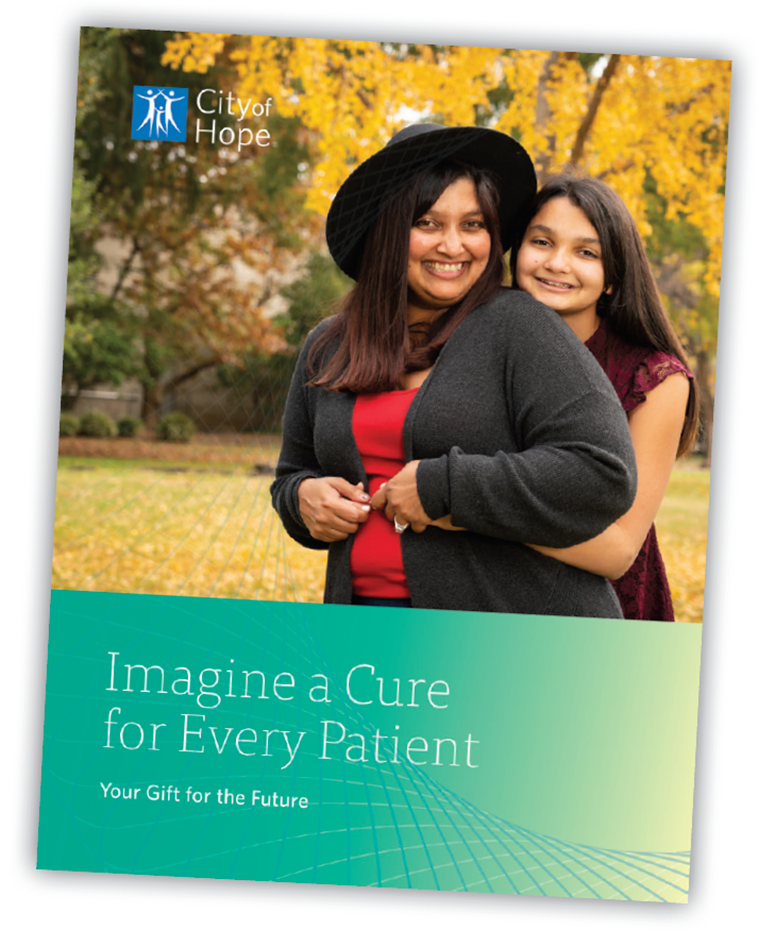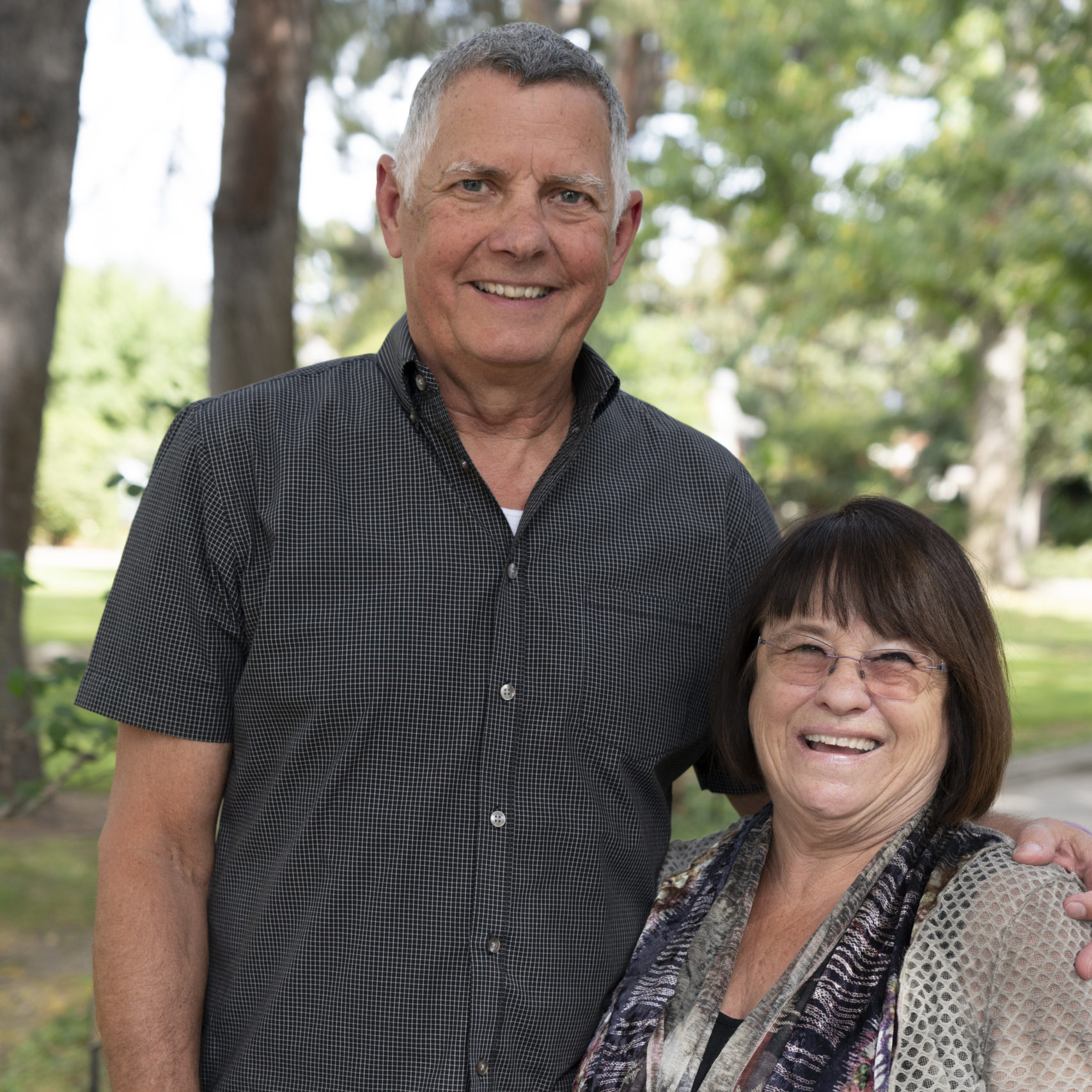Fall 2023 Issue
Learn how your support makes breakthrough treatments and research possible. We hope you enjoy these stories.
Doris and Bob Mayfield – The Love and Legacy of a Lifetime
 Doris and Bob Mayfield were the epitome of the ’50s power couple. Fun-loving and well-traveled, they trekked all over the United States and visited exotic places around the world, thanks to Bob’s job as an engineer.
Doris grew up in Kansas, where she lived through the Great Depression. She earned a degree in mathematics from Washburn University. Bob graduated from the Massachusetts Institute of Technology with an engineering degree.
Doris and Bob met “over a fence” when she lived in Tulsa, Oklahoma. They instantly took to one another, and Bob proposed to Doris over the phone soon after they met when he returned home to Virginia. They married in 1957 in Alexandria, Virginia, and settled in Tulsa when Bob accepted a position at Fenix and Scisson Engineering. Ultimately becoming Vice President, his job took them to countries like Argentina, South Africa and France. Their love of traveling would become one of their greatest pleasures. The couple also loved to play golf and became members of a local club, where Doris would volunteer during PGA golf tournaments.
Then, in 1970, their lives took a dramatic turn. Bob started to have trouble breathing. As his difficulty breathing became more frequent, he sought treatment.
Bob was diagnosed with a genetic form of emphysema known as alpha one antitrypsin deficiency. Realizing they needed advanced care, Doris and Bob traveled to City of Hope in California in search of answers and leading-edge care — and they found them.
Bob underwent treatment at City of Hope for the next five years. Doris felt the care he received at City of Hope helped extend Bob’s life. They were grateful to take one last ocean cruise around the world before his health began to decline. Bob lost his battle with emphysema, leaving Doris a widow in her early 50s. They were married for over 25 happy years.
In memory of Bob, Doris decided to include a gift in her trust to City of Hope. The gift is designated to help support City of Hope’s research and treatment of lung diseases.
Doris and Bob never had children, though both their siblings’ children were very special to them. The families would gather at their house and Doris would bring out the puzzle basket for fun and to challenge young minds. That’s everyone’s fondest memory — her basket of puzzles.
Doris’ niece, Patty Dykhouse, and nephew, Jim Townsend, say their Aunt Doris was a kind and generous person who believed in giving back to others. “Aunt Doris chose to leave a legacy gift to City of Hope to help find a cure for people with life-threatening lung diseases like Uncle Bob,” they said.
Doris and Bob Mayfield were the epitome of the ’50s power couple. Fun-loving and well-traveled, they trekked all over the United States and visited exotic places around the world, thanks to Bob’s job as an engineer.
Doris grew up in Kansas, where she lived through the Great Depression. She earned a degree in mathematics from Washburn University. Bob graduated from the Massachusetts Institute of Technology with an engineering degree.
Doris and Bob met “over a fence” when she lived in Tulsa, Oklahoma. They instantly took to one another, and Bob proposed to Doris over the phone soon after they met when he returned home to Virginia. They married in 1957 in Alexandria, Virginia, and settled in Tulsa when Bob accepted a position at Fenix and Scisson Engineering. Ultimately becoming Vice President, his job took them to countries like Argentina, South Africa and France. Their love of traveling would become one of their greatest pleasures. The couple also loved to play golf and became members of a local club, where Doris would volunteer during PGA golf tournaments.
Then, in 1970, their lives took a dramatic turn. Bob started to have trouble breathing. As his difficulty breathing became more frequent, he sought treatment.
Bob was diagnosed with a genetic form of emphysema known as alpha one antitrypsin deficiency. Realizing they needed advanced care, Doris and Bob traveled to City of Hope in California in search of answers and leading-edge care — and they found them.
Bob underwent treatment at City of Hope for the next five years. Doris felt the care he received at City of Hope helped extend Bob’s life. They were grateful to take one last ocean cruise around the world before his health began to decline. Bob lost his battle with emphysema, leaving Doris a widow in her early 50s. They were married for over 25 happy years.
In memory of Bob, Doris decided to include a gift in her trust to City of Hope. The gift is designated to help support City of Hope’s research and treatment of lung diseases.
Doris and Bob never had children, though both their siblings’ children were very special to them. The families would gather at their house and Doris would bring out the puzzle basket for fun and to challenge young minds. That’s everyone’s fondest memory — her basket of puzzles.
Doris’ niece, Patty Dykhouse, and nephew, Jim Townsend, say their Aunt Doris was a kind and generous person who believed in giving back to others. “Aunt Doris chose to leave a legacy gift to City of Hope to help find a cure for people with life-threatening lung diseases like Uncle Bob,” they said.
 Doris passed away in 2022 — 91 years young. Patty and Jim toured City of Hope that September and are happy that Doris and Bob’s legacy will live on through their generous gift.
“When I think of Aunt Doris, I think of an adventurer and lifelong learner. I want to be like her. At the age of 85, she went on horseback to see monarch butterflies in Mexico!” said Patty.
To learn more about ways to support City of Hope through a gift in your will or living trust, or by naming City of Hope a beneficiary of your retirement plan or other financial account, contact the Office of Planned Giving at (800) 232-3314 or plannedgiving@coh.org.
Doris passed away in 2022 — 91 years young. Patty and Jim toured City of Hope that September and are happy that Doris and Bob’s legacy will live on through their generous gift.
“When I think of Aunt Doris, I think of an adventurer and lifelong learner. I want to be like her. At the age of 85, she went on horseback to see monarch butterflies in Mexico!” said Patty.
To learn more about ways to support City of Hope through a gift in your will or living trust, or by naming City of Hope a beneficiary of your retirement plan or other financial account, contact the Office of Planned Giving at (800) 232-3314 or plannedgiving@coh.org.The Latest Innovations in Lung Cancer Treatment
City of Hope recently launched an innovative biomarker tool with the potential to revolutionize diagnosis and treatment for lung cancer. The tool includes a screening quiz targeted at patients with non-small cell lung cancer. Its goal is to guide patients through the challenge of the disease and know if they have indicators that could provide a more precise diagnosis and advanced, targeted treatment options.“This is a valuable tool we are very excited to be able to offer patients. Understanding their biomarker will help us personalize the treatments our patients receive.” — Ravi Salgia, M.D., Ph.D.The new tool is a valuable resource for patients to explore the latest advances in lung cancer treatment. Patients can read inspiring stories from others who are at similar junctions in their cancer journeys, be it recently diagnosed, just starting treatment, living with cancer or caring for a loved one with the disease. Lung cancer is the No. 1 cancer killer in the U.S., claiming more than 150,000 lives each year. But if it’s caught early, survival rates can top 90%. The key is early detection. A low-dose computed tomography scan can spot a malignancy at its earliest beginnings when it can be successfully treated. Seven million Americans between the ages of 50 and 80 who currently smoke or used to are considered at high risk for the disease. Early screening could save thousands of lives. As a leader in lung cancer treatment and research, we advocate for early detection, taking on cases deemed untreatable and offering procedures unavailable elsewhere. Nearly 240,000 new cases will be diagnosed in the United States this year, mostly smokers, but cases in people who never smoked, are accelerating, which means environmental factors or genetics may be involved. Should you be screened for lung cancer? This helpful diagram can help you answer this question and can be found at CityofHope.org/lung-cancer-care.
A Lung Cancer Survivor Story
“It was the best feeling ever. Every day now I have to pinch myself. I feel so lucky.” — Tabitha Paccione, lung cancer survivor
 Tabitha Paccione was just 35 when she received a diagnosis of Stage 4 nonsmall cell lung cancer with metastases to her bones, liver, lymph nodes and brain. She had never smoked.
Nearly 80% of patients diagnosed with lung cancer are not active smokers. About 60% have quit; 15% never started.
“Anyone with lungs can get lung cancer,” Paccione said. After Ravi Salgia, M.D., Ph.D., tested Paccione’s tumor and found a rare, targetable genetic mutation, he created a customized treatment plan for her. After three years of targeted therapy, she went into remission. She has been cancer free since 2019.
Tabitha Paccione was just 35 when she received a diagnosis of Stage 4 nonsmall cell lung cancer with metastases to her bones, liver, lymph nodes and brain. She had never smoked.
Nearly 80% of patients diagnosed with lung cancer are not active smokers. About 60% have quit; 15% never started.
“Anyone with lungs can get lung cancer,” Paccione said. After Ravi Salgia, M.D., Ph.D., tested Paccione’s tumor and found a rare, targetable genetic mutation, he created a customized treatment plan for her. After three years of targeted therapy, she went into remission. She has been cancer free since 2019.Planning for the Future of Your Loved Ones
National Estate Planning Awareness is recognized every October. If you didn’t create or review your plans, now is the time. Having a legal will, trust, or estate plan is a critical step in ensuring the security of your loved ones.
Planning puts you in control of your financial and charitable future.
The last few years have taught us that being prepared is essential. Creating your will, trust or estate plan is how you pass on your possessions and the values guiding your life.
 To help make your planning a little easier, we would like to offer you our booklet, Imagine a Cure for Every Patient. Simply download it today through the form on this page.
To help make your planning a little easier, we would like to offer you our booklet, Imagine a Cure for Every Patient. Simply download it today through the form on this page.
Your family and loved ones should always come first, but we hope you will consider including a gift to City of Hope in your plans.
A legacy gift to City of Hope is an opportunity to convey your hopes and dreams for the kind of future you want your children and grandchildren to inherit. Your gift will make it possible to conduct breakthrough science, provide lifesaving care and enable City of Hope to make unprecedented progress as a national leader in research and treatment.
Meet Stephen and Joyce Hasper
 “A key commitment of our marriage is to always be contributing to organizations that reflect our values. In addition to the care I receive, there is also much research that will help people around the world. We feel privileged to be part of this unique place.”
— Stephen and Joyce Hasper, members of the Patient and Family Advisory Council and the Legacy of Hope Society
“A key commitment of our marriage is to always be contributing to organizations that reflect our values. In addition to the care I receive, there is also much research that will help people around the world. We feel privileged to be part of this unique place.”
— Stephen and Joyce Hasper, members of the Patient and Family Advisory Council and the Legacy of Hope SocietyWe Are Here to Help You
If you would like assistance creating or expanding your personal legacy, please contact us at (800) 232-3314 or plannedgiving@coh.org. Our planning experts are here to help you in any way we can.Legacy of Hope Society
If you have already included City of Hope in your will, trust or estate plan, please let us know so that we may thank and celebrate you. Notifying us is the best way to ensure we receive the gift you intend for us and that your wishes for the use of your gift are honored at the time your gift is received.
 We would also like to welcome you into our Legacy of Hope Society and, with your permission, provide appropriate recognition for your generosity.
We would also like to welcome you into our Legacy of Hope Society and, with your permission, provide appropriate recognition for your generosity.
Sample Bequest Language and Tax ID
To leave a gift to City of Hope, consider including this language in your estate plans:
Unrestricted Bequest:
“I give [ __ percent of my estate, or description of asset, or ____ dollars] to City of Hope, a California nonprofit corporation, 1500 East Duarte Road, Duarte, CA 91010 (City of Hope Tax ID 95-3435919), for its general use.”
Kelly Lee with her daughter, Caitlin Herron. In June 2016, Caitlin, then age 12, was diagnosed with a form of leukemia so rare in adolescents that only a handful of children had ever been diagnosed with it, and none had survived. After a national and international search, City of Hope found a donor for Caitlin, and she underwent a successful bone marrow transplant. In April 2017, Caitlin was declared cancer-free.

